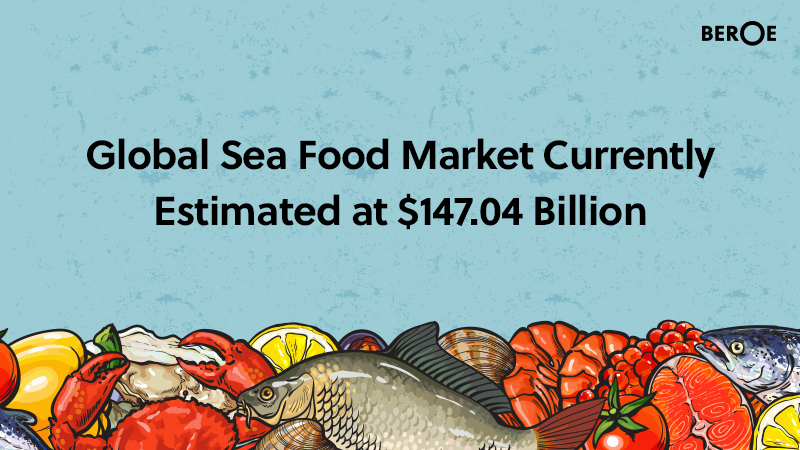Global Sea Food Market Currently Estimated at $147.04 Billion, Says Beroe Inc
Source: PR Newswire

RALEIGH, North Carolina, Nov 6, 2019 - The global seafood market is expected to reach a value of $162.21 billion by 2021, growing at a CAGR of 5.03 percent, according to Beroe Inc, a procurement intelligence firm. The warehouse demand is highly fragmented with a supply of approximately 175 MMT of fishes annually, which is estimated to reach 180 MMT in 2020.
At a global level, the key producing country for tuna is Thailand, accounting for 40 percent of the global supply, for shrimp, China is the main producer (50 percent) and for salmon, Norway is the main producer. The key importing countries are the U.S. for tuna, accounting for 13 percent of imports, Korea for shrimp, for 22 percent, and Belarus, Poland, Finland, and Sweden for Salmon, with each region accounting for an 11 percent share.
https://www.beroeinc.com/category-intelligence/sea-food-market/
Beroe, which is based in North Carolina, further stated that procurement experts can access this report on its recently launched market intelligence platform Beroe LiVE: live.beroeinc.com
The Seafood industry is gaining momentum from the increasing demand from the frozen ready to cook seafood industry due to convenience and time-saving factors and an increasing disposable income and per capita consumption. Aquaculture is gaining dominance over traditional agricultural practices, due to its volume production. The major constraint currently is the disease outbreaks and the costs incurred in ensuring a disease-free environment. Disease outbreaks can occur both during raising and processing seafood. EMS or Early Mortality Syndrome had caused a substantial decrease in the shrimp production of the leading countries like China, Vietnam, Indonesia, etc
The demand for premium seafood products such as scallops, crabs, oysters, and lobsters is expected to increase in the coming decade. With the change in demand patterns, it’s expected that as a result there will be growth in aquaculture and corresponding shift from the production of traditional and low–valued species, such as carps to premium products. Demand for squids is expected to remain high in the coming decade.
Key Findings:
- In the global seafood market, fresh & chilled holds the largest value share at 67 percent, followed by canned for 14 percent and frozen for 14 percent.
- Fish capture over the decade has taken a more inland approach with the major capture type being aquaculture and tuna, shrimp, salmon are the most captured and traded species.
- Global procurement is a better option as this would safeguard against regional supply disruptions. Engaging in multiple supplier sourcing helps in mitigating risk to a large extent compared to engaging with a single supplier.
- Farmers/catch groups and cooperatives are the suppliers to the seafood industry. Suppliers will have low bargaining power due to the fragmented nature of the market.
- Major suppliers include Canada-based High Liner Foods, which holds approximately 4 percent of the market share of frozen fish in the US retail channels, and UK-based Iglo Group/Nomad Foods Limited which holds the biggest frozen food supplier in Europe.
The research methodology adopted for the report included:
- Experts with twenty years of domain experience
- Interaction with buyers
- Inputs from supply chain partners
The most important cost drivers in the global seafood market are raw materials. For tuna, raw materials are responsible for 54–63 percent of costs, for shrimp it is 40 percent of costs and for salmon, raw materials account for 42 percent of the total costs. The prominent engagement models in the industry are based on a contract length of 6-12 months, with the contract type and best price lock-in months depending on the specific type of seafood.
The report also includes:
Market Analysis:
- Global Seafood Market-Overview
- Regional Analysis
- Market Drivers and Constraints
Tuna Market Analysis:
- Global Supply–Demand Analysis
- Global Trade Dynamics
- Price Analysis
- Cost Structure Analysis
Salmon Market Analysis:
- Global Supply–Demand Analysis
- Global Trade Dynamics
- Price Analysis
- Cost Structure Analysis
Shrimp Market Analysis:
- Global Supply–Demand Analysis
- Global Trade Dynamics
- Price Analysis
- Cost Structure Analysis
Industry Analysis:
- Porter’s Five Forces Analysis
- Trends in the Global Seafood Industry
Procurement Insights:
- Procurement Strategy–Best Practices
Supplier Analysis:
- Comprehensive Supplier List
- Profiling of Key Players
- High Liner Foods
- Iglo Group
- Leroy Seafood Group
- Marine Harvest
- Thai Union Frozen Products
About Beroe Inc.:
Beroe's unique business model involves providing market intelligence and analytics to the procurement teams of businesses across the globe. Beroe leverages its deep domain expertise in 300 + categories across 14 industries. It boasts of more than 80 of the Fortune 500 companies as its clients.
To learn more about Beroe Inc, please visit http://www.beroeinc.com
Media Contact:
Rob McMurtrie
rob.mcmurtrie@beroe-inc.com
Related News
View all
Beroe Makes Strategic Investment in Forestreet, Strengthening AI Capabilities and Driving Procurement Intelligence Innovation

Beroe introduces on-demand geopolitical risk analysis through PRISM enabling C-Suite to protect against ongoing supply chain disruptions
